Areas of use of solar energy 1
Fields of use of solar energy
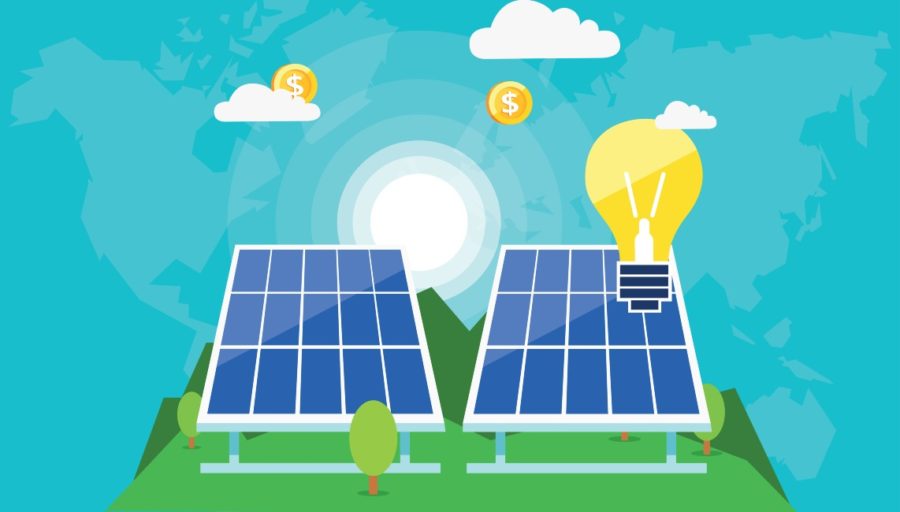
uses of solar energy, The source of the sun is one of the important sources that are exploited at the present time to generate electric power and heat water.
The sun’s rays consist of several forms, which are visible rays, infrared rays, and a small amount of ultraviolet rays. And what we receive from the sun’s rays is a small percentage because there are several factors that work to absorb it, such as the atmosphere and clouds, The solar energy that the Earth receives daily is 200,000 times the amount of electrical energy produced worldwide.
Follow with us this article “Areas of Solar Energy Use” to learn about the ancient and present uses of solar energy and its advantages.
Ancient uses of solar energy
Since ancient times, humans have benefited from the source of direct sunlight in many different applications, such as heating homes, drying agricultural crops, cooking, evaporating water and making fires. In addition to its use in military matters, Archimedes, the Roman fleet, focused the sun’s rays on enemy ships with a large number of shields involved.
Uses of solar energy today
With the great scientific progress and technological development that we are now, There are new scientific methods for harnessing solar energy to generate electrical and thermal energy. Although solar energy is classified as one of the renewable energy sources, the extent of its use is linked to the presence of sunlight.
Uses of solar energy to generate electricity
Solar energy can be converted into electrical energy by shining sunlight on solar (photovoltaic) cells to produce electrical energy in the form of a constant current. Solar (photovoltaic) cells depend on materials made of semiconductors, such as silicon, germanium, and others, for the conversion.
The field of solar energy is used to produce electric energy in many public and private places such as residential homes, the health, commercial, industrial and agricultural sectors, and in lighting public roads.
Uses of solar energy in thermal generation
In which solar energy is converted into thermal energy by means of flat metal solar panels painted in black color to increase the absorption of heat from the sun’s rays. It is used for heating and water heating. One of the most famous applications of solar heaters that are located on the roofs of buildings.
Advantages of using solar energy
- It depends entirely on sunlight to produce electricity and heat.
- Maintenance costs are low.
- You need simple technical components compared to wind energy technologies to generate electricity.
- It does not depend on fossil fuels.
- Sustainable energy that does not run out and is not harmful to the environment.
- It is used free of charge to generate electricity and heat.
- There are future developments to raise the efficiency of electricity production from solar energy.
- Solar energy is used in the field of electric cars to dispense with fuel sources.
Disadvantages of using solar energy
- The cost of installing the components of a solar power system is expensive.
- The process of converting solar energy into electrical and thermal energy is expensive.
- The extent of benefit from solar energy is linked to the presence of sunlight.
- The low efficiency of solar panels indicates that solar energy is not well utilized.
- Installing solar panels and heating panels need large areas.
- weather fluctuations throughout the year, It makes the solar energy source unstable to many.
Working principle of solar cells
working principle of solar cells, Solar cells are one of the important elements of the solar energy system, which works to receive the light of solar energy and convert it into electrical energy in the form of a constant current.
The sun’s rays contain a lot of energy and photons to meet the Earth’s renewable energy needs. With the advancement of technology and the manufacture of solar cells, I began to exploit the conversion of solar energy into electrical energy through solar panels, which contain many photovoltaic cells.
Follow this article with us to learn more details about the principle and types of solar cells.
What is a solar cell?
It is the cell that converts sunlight into electrical energy in the form of a constant current, depending on some of the properties of the cell designed to generate and move energy. It is also called a photovoltaic cell, a name derived from the nature of the cell’s work. The word photo means light and the word voltaic means electricity. The Arabic name for it is photovoltaic.
It is made of semiconductors to form a potential difference when exposed to light, and thus an electric current is generated. Its light absorption coefficient is linked and when connected to an electric load such as an electric lamp, for example, between its two ends, the electric current passes through the conductors to operate the lamp.
solar cell components
The solar cell is made of semiconductor materials represented by giving a negative charge to silicon by adding the element phosphorus and it is called negative (N-type) silicon. Or by adding boron and called cationic silicon (P-type).
The solar cell consists of many layers, the most important of which are the two main layers:
P-type: Silicon is the material in which the number of electronics is the majority.
N-type: Silicon is the material in which the number of holes (holes) is the majority.
The insulation between the two layers is done with an insulating material called the transit zone. A transparent layer is also placed on the surface of the front cell of the plate to increase the absorption of photons from sunlight. In addition, two metal layers of aluminum are placed on the top and bottom to protect the solar cells.
Working principle of solar cells
When enough photons of light from the sun are absorbed, The electrons move from the silicon material, causing a change in its internal energy, and when it approaches the transit region, the electrons and holes (holes) are directed collectively according to their charge to the appropriate end of the cell (P-type and N-type), Thus, a potential difference is generated between its two ends, resulting in the flow of a photoelectric current representing the value of the product of the voltage multiplied by the current (p = V x I).
Types of solar cells
- Mono crystalline silicon cell: It is made with premium materials and has an efficiency of 17%.
- Polycrystalline Silicon Cell: It is made of silicon wafers and treated to increase its electrical properties. Its efficiency is up to 16%.
- Thin-film: The silicon material is designed in the form of a thin layer, but its efficiency reaches 6%, which is low compared to the previous two types.
Types of solar panels
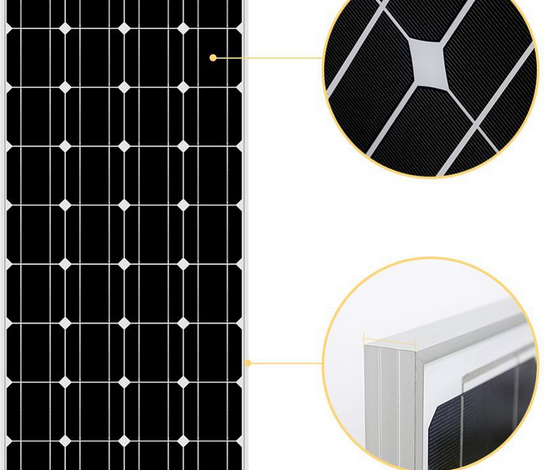
Solar panels are one of the most important components used in solar energy systems. It produces electrical energy through sunlight (photons) and sends it to the charging regulator and then to the inverter, batteries and electrical loads. Different types of solar panels are available depending on the type of material, its efficiency and manufacturing quality.
Types of solar panels in detail
There are many companies that manufacture solar panels. Solar panels are categorized into three types, Which:
- Monocrystalline silicon cells.
- Polycrystalline silicon cells.
- Thin-film panels.
O no: monocytes (Monocrystalline silicon ):
- This type has a distinctive appearance which indicates the highest purity of silicon crystals.
- enjoys the highest efficiency rates, It may reach more than 20%.
- Shelf life of 25 years or more depending on the quality of the panels.
- The panels are made of black colour, So that sunlight (photons) interact with a crystal of pure silicon.
- While the panels are black, Monocrystalline solar panels have a variety of colors on their panels, side frames, and back.
- Good performance under slightly low solar radiation condition.
The disadvantage of this type of panels is the high cost compared to polycrystalline silicon cells.

Secondly: Polycrystalline silicon cells:
- You can quickly distinguish between these panels because this type of solar panel has squares that do not cut corners, it has many lines, It is often blue in colour.
- Made of melting raw silicone, They are faster and cheaper than monocrystalline silicon panels.
- Shelf life of 25 years or more depending on the quality of the panels.
- Its efficiency is about 16.5%, Because of the low purity of silicon.
- Its disadvantage is that the appearance, As Monocrystalline silicon panels have an aesthetic appearance, But it does not matter to buyers.
- It requires slightly higher installation space than Monocrystalline silicon solar panels
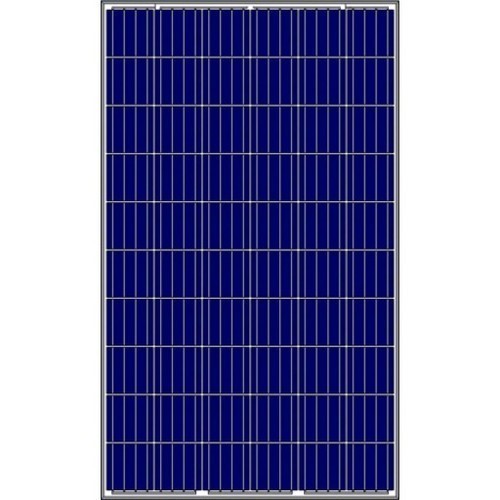
Third: Thin-film:
- The biggest aesthetic factor of this type, It is the thinness of its manufacture and its streamlined shape, which can be folded, unlike the previous types.
- A lot of development and research is going on to make it better suited for use.
- Can be used on the go.
- The high cost compared to its shelf life compared to other types.
- They carry the shortest warranties because their life span is shorter than other types of panels.

The difference between Mono plates and Poly . plates
There is not much difference between the two types, When we say that Mono panels produce 330W, there are also Poly panels that produce 330W, In terms of production, there is no difference between the two.
In terms of the sizes of the two types and the saving in space is very simple:
Currently, we find that the Mono panels have a capacity of 280W and a size of 165*99 and a maximum watt in the poly panels at the same size = 265W.
So space savings = 280-265/265 * 100% = 5.6%
It is a small percentage in terms of saving space between the two types, Since the Mono panels are slightly less than the poly panels in terms of area,
The big difference between the two types is that the appearance, As Monocrystalline silicon panels have an aesthetic appearance, But it does not matter to buyers.
We hope that everyone has benefited from this article, in which we reviewed the principle of solar cell work supported by explanations and illustrations.
Solar Panel Selection Criteria
criteria for selecting solar panels, There are several criteria of great importance that you should know before purchasing solar panels, The factors affecting the selection criteria of solar panels are the type of solar panel, its efficiency, warranty and the effect of temperature on the productivity of the solar panel.
Follow this article with us to learn more details about the criteria for choosing solar panels.
Types of solar panels
First of all, you should know the types of solar panels, which are:
- Mono crystalline silicon solar cells :
Manufactured with its distinctive and harmonious appearance, which indicates the purity of silicon, It is widely available in the market with different capacities. It is characterized by high efficiency compared to polycrystalline solar cells.
- Polycrystalline Silicon Solar Cells :
They contain crystals of different shapes and dimensions, and vary in their optical and physical properties. A huge multi-grained crystal is made, from which the necessary plates are cut. It is characterized by a lower price compared to monocrystalline and its efficiency reaches 16.9%.
- Thin-film cells are called thin -film cells. It is made in a flexible, thin, streamlined shape and is lighter in weight compared to the previous types, but its efficiency is low and it is not widely spread in the market.
Solar Panel Selection Criteria
Manufacturers of solar panels put up a special catalog with the data sheet and the guarantee percentage through which we can evaluate the quality of the product, and the most important of these criteria are:
Tolerance Solar Panel Production Capacity
Each manufacturer sets a limit on the production power of the solar panel in percentage terms, which is called Production power tolerance, meaning that each solar panel may produce more power than the written value or less by a certain percentage.
For example, suppose that a solar panel has a capacity of 330W and a permittivity ratio of +/- 5%. This means that the solar panel’s productivity ranges from 320W to 340W.
Some companies are satisfied with setting the tolerance only positive, This means that the value of the power of the board is not less than the actual power of it, but rather increases by an amount proportional to the permittivity.
Solar panel efficiency
Each company sets the value of the efficiency of the solar panel in percentage at Standard Test Condition STC and at solar radiation of 1000 watts per square meter and temperature of 25 degrees Celsius.
The efficiency of the panel by dividing the maximum power by the product of the solar radiation power gives 1000 watts per square meter in the area of the panel.
Solar Panel Warranty
It is one of the most important criteria for choosing solar panels. As most of the global manufacturers of solar panels offer a 10-year warranty on manufacturing defects and a 25-year warranty on performance.
Suppose we have two panels:
Solar Panel One: Offers a 10-year warranty against manufacturing defects, a 90% power output guarantee for the first 10 years, and an 80% warranty for 25 years of the solar panel’s life.
This means that it is guaranteed to change the board when a defect occurs, It also guarantees that when you choose the board after 10 years of operation or delivery, it will not decrease more than 10%, It also guarantees that when measured after 25 years, performance will not decrease by more than 20%.
The guarantee also means that it is possible for the efficiency of the panel to decrease to 90% in the first year and to continue operating at this rate for 9 years, then the efficiency of the panel decreases in the tenth year to 80%.
Solar Panel II : Offers a 10-year product warranty, a 90% linear performance guarantee for the first 10 years, and a 80% linear performance guarantee for 25 years.
It means that it provides a “Linear” performance guarantee, which means that the production of the solar panel decreases by no more than 1% annually, and then the benefit increases, it operates more efficiently and produces more energy over a period of 25 years.
Given the phenomenon of early deterioration, Some manufacturers put a performance guarantee for the first year, saying that the power is not less than 3% to 5% for a period of one year from the date of delivery.
Average Operating Temperature (NOCT)
It is one of the most important criteria for choosing solar panels. It is called in English (Nominal Operating Cell Temperature).
Solar panel manufacturers subject their products to laboratories at 25°C. But the data values of the solar panel are different on site meaning that it will operate at temperatures well above 25°C.
Therefore, here we have to measure the performance of the solar panel at different conditions from the standard test conditions, such as measuring the temperature that the solar panel will reach in the open circuit mode.
As the temperature increases on the solar panel, the efficiency decreases by an amount that depends on the ratio of volts per degree Celsius, We find this percentage in the solar panel temperature coefficients catalog or data set by the company. Which we will explain in the thermal coefficient of solar panels.
Thermal coefficient of solar panels
It is one of the most important factors affecting the selection criteria for solar panels. It is called in English in English (solar panel temperature coefficients).
are the thermal properties that we find in the solar panel data, Which we use to determine the loss or yield in the characteristics of the solar panel from the values of voltage, current and electrical capacity with increasing temperature.
When reading the value of the heat coefficient at the open circuit voltage, you will notice that the voltage value will decrease when the temperature rises by one degree Celsius, and the value will be negative, The value of the current will also increase by a certain amount when the temperature is increased.
for example, If the temperature coefficient at the maximum power of the solar panel (Temperature Coefficient of Pmax) is -0.43%/
This means that the capacity of the panel will decrease by -0.43% when the temperature is increased by 1°C, Simultaneously, the voltage decreases by -0.032%/ (Temperature Coefficient of Voc), The current increases by 0.047%/ (Temperature Coefficient of Isc)
Solar Panel Certification
There are several certificates that guarantee that the specifications of the solar panel are compatible with the product, and some of these international certificates are:
IEC 61215 Certificate: Describes requirements for the quality of solar panels and performs tests to determine mechanical and electrical properties to comply with solar panel data.
IEC 61730 Certificate: Describes safety requirements as well as tests for solar panels, It must be of Class A class to withstand electrical hazards.
UL LTED Certification: is an American safety consulting organization and one of the world’s largest and certified to perform safety testing and laboratory inspection.
CE marking: Describes the product’s compliance with the requirements of European Union regulations.
What are bifacial solar panels?
What are bifacial solar panels? Year after year progress and development in the generations of solar panels, From simple panels to traditional panels with marked improvement in efficiency, Then the half-cell technology down to the two-sided solar panels with higher efficiency.
In this article, we will discuss the changes and developments that have contributed in recent years to improving the productivity of solar panels.
The technique adopted in the formation of solar cells
Half-cell technology got its start in 2014 thanks to REC Solar, Since then, most companies have turned to manufacturing their cells with this technology, which has contributed to improving the performance and durability of the solar panel.
Among the advantages of the panels manufactured using the half-cell technology:
- doubling the number of cells from 60 to 120, Or from 72 to 144 cells.
- Contributed to improving performance.
- Its yield is higher than that of traditional (whole cell) panels.
- Cutting the cell in half increased its mechanical durability.
- This technique worked to reduce the percentage of loss resulting from the internal resistance of the cells.
- It is not affected with the shade as much as the traditional cells that once exposed to a small part of the shade nullifies the production of a quarter, half or the entire panel.
Half Cut Cells Solar Panels
Half Cut Cells Solar Panels Most companies have turned to manufacturing half-cell solar panels because of their advantages that make them better than ordinary panels – with a full cell – in terms of efficiency, yield and space.
What are the half-cell solar panels? Why do experts prefer it over regular panels? Follow us to learn about the important questions about the advantages of solar panels that purify half the cell over regular solar panels.
What is half solar cell technology?
The half-cell technique Half Cut Cell) is created by separating a single silicon cell into two halves evenly by a laser, The purpose of this is to improve productivity performance and increase durability, unlike regular full-cell panels.
But the question remains, are there other advantages of panels with half-cells over panels with full cells?
Of course, there are many other advantages that we will mention in this article, such as reducing losses caused by resistance, And it can produce energy even though there is a shadow on a specific part of the board, In contrast to full-cell panels that cannot produce electrical energy or may only produce a quarter depending on the number of cells exposed to shade.
Formation of half-celled plates
Half-celled plates can be distinguished from whole-celled plates by looking at, Since the plates with half-cells are divided into two parts, Each section has three strings so the number of strings becomes 6.
Since the cell has been divided into two halves, The number of cells in the solar panel will double to 120 instead of the 60 cells in the full-cell panel.
You will also notice the presence of three Junction Boxes, In order to distribute the three By-Pass Diodes evenly over the six cell chains as shown in the image.
Half-cell panels effect with shadow and hot spots
O no: When there is a shadow on a quarter of the board or on one of a total of 6 strings, The energy loss will be only 15%. In contrast, full-cell panels may lose 30%.
Secondly: Half-cell technology contributes to reducing heat, As a result of reducing the current in half.
Third: Reducing the resistance of the connections by increasing the number of busbars that you can see with the naked eye on the surface of the solar cells.
Fourthly: Since the half-cell technology is designed on the basis of reducing the current, resistance and heat generated, The potential for hot spots to occur is very low.
Advantages of half-cell solar panels
- Less prone to hot spots.
- Increase energy productivity.
- Low percentage of energy lost when exposed to shade.
- Cut the current in half.
- Do not generate high heat.
- More buses to reduce resistance.
Conclusion: It can be said that the solar panels with half-cells (Half Cut Cells) exploit their full production capacity, By reducing losses while reducing the possibility of hot spots that occur as a result of high temperature.
What are bifacial solar panels?
After we got acquainted with the panels designed with half-cell technology, We will talk about another topic, which is a feature that complements the feature of the half-cell technology, which is the two-sided solar panels.
The researchers conducted studies and practical experiments on the double-sided panels, It has been reached as a result that the back face of the panel can increase the energy production by up to 30%, Depending on the type of surface reflected and the amount of light reflected, the ratio may be lower than the maximum.
Here is a data sheet for several models of dual-sided solar panels from Canadian company.
What we notice from the data of the following double-sided solar panel model “CS7N-640MB-AG”:
- If the yield of the back side of the solar panel is 5%, The panel’s output increases from 640W to 672W.
- If the yield of the back side of the solar panel is 10%, The panel’s output increases from 640W to 704W.
- If the productivity of the back side of the solar panel is 20%, The output of the board increases from 640W to 768W.
datasheet dual sided solar panel
We offer you a double-sided solar panel data sheet from Canadian Solar.
Ways to rationalize the consumption of electrical energy

Methods of rationalizing the consumption of electrical energy, The importance of electrical energy around us has a great role in enhancing our daily life. Where the users of electrical appliances should reduce the proportion of consumption to reasonable values, Or, you can replace the old devices with newer ones that save electrical energy consumption to contribute to reducing the monthly bill. Preserving electricity sources for future generations, What are the ways to rationalize the consumption of solar energy and what is its impact on the economy.
Benefits of rationalizing electrical energy consumption
The rationalization of electrical energy consumption contributes to many benefits, the most important of which are:
- Reducing the use of petroleum resources and its derivatives.
- Helps reduce emissions that affect the environment.
- It works to raise the state’s economy, which helps the possibility of building solar energy projects.
- Reducing the wasteful use of electrical energy.
- Reducing the value of the subscriber’s monthly electricity bill.
- Contributes to relieving stress on the electrical network by a large percentage.
- Extend the life of electrical appliances.
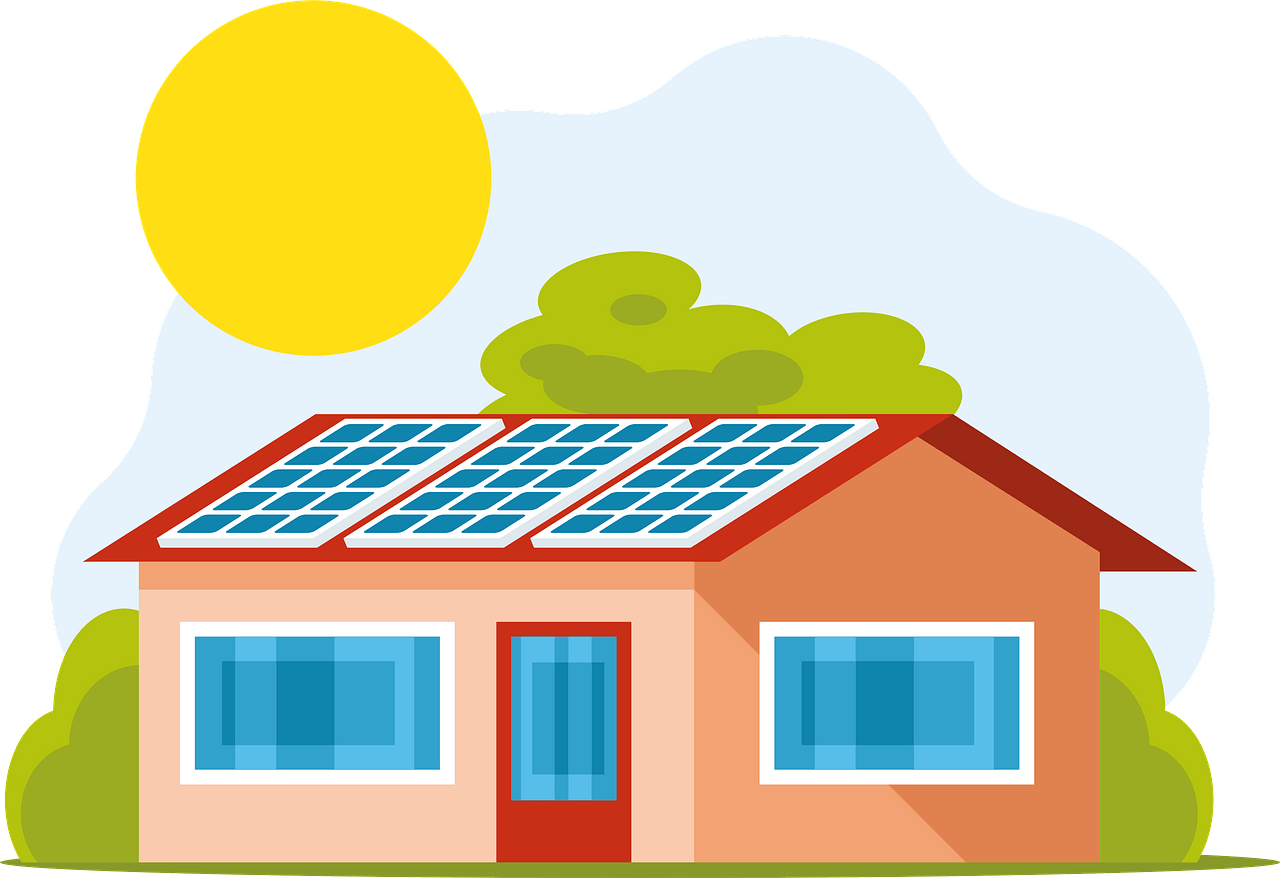
Ways to rationalize the consumption of electrical energy
- Use energy-saving lighting units and turn them off at bedtime, in vacant areas, and when there is sunlight. It is also preferable to paint the walls in light-reflecting colors to reduce the number of lighting units.
- Install a timer device in the places of the stairs to turn off the lighting units after several minutes of operation.
- Set the air conditioner to a temperature not less than 24 degrees, Turn off the air conditioner when you leave the house. And we know that using the air conditioner in the right way contributes to reducing the cost of monthly electrical energy consumption by a large difference. It is an important pregnancy and has a major role in creating a balance by reducing the cost of the monthly bill.
- Stop turning on unnecessary electrical appliances sometimes, Like: Leave the TV on while you sleep at night.
- It is preferable to replace old devices that are a burden for consumption with modern energy-saving devices such as: Replacing your old electric oven or dishwasher with modern, energy-saving appliances.
- Rely on the solar heater as much as possible instead of running the electric heater.
- Clean the condenser at the back of the refrigerator once a year to remove accumulated dust, As dust reduces the efficiency of the refrigerator, which leads to an increase in its consumption of electrical energy.
- Avoid random and excessive operation of household electrical appliances.
The effect of rationalizing electrical energy consumption on the economy
The positive use of electrical appliances contributes to alleviating the burden on power plants and power transmission networks. In addition to raising the state budget by reducing oil consumption, And relying on building solar power plants to generate sustainable electric power without relying on traditional sources such as petroleum, which has been threatened with extinction over the years.
We are pleased to have you visit our pages on social networking sites, where we publish exclusive offers on our website.
Our Facebook page here .
Our Twitter account is here .


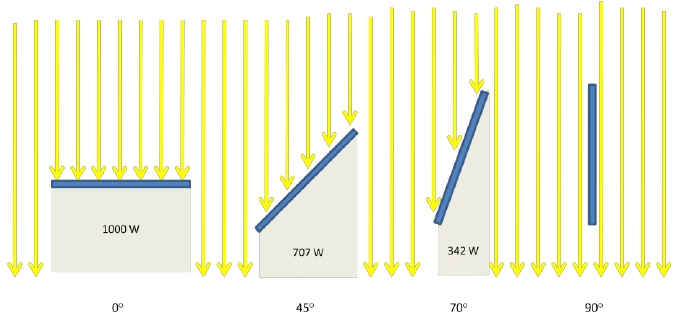



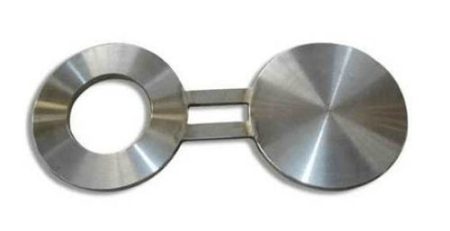





Leave a Reply
You must be logged in to post a comment.